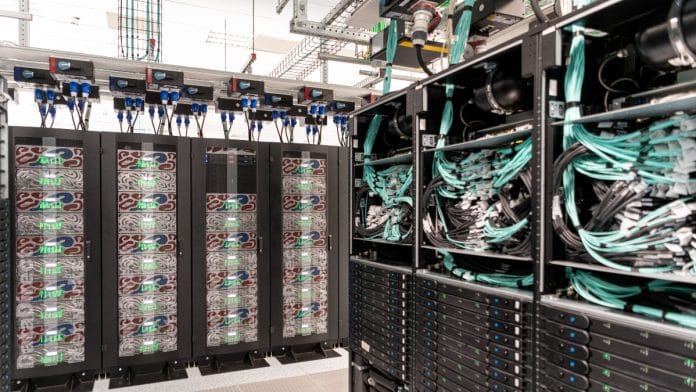New Delhi: India’s data-centre capacity is seeing a 50 percent compound annual growth rate (CAGR) and is expected to continue this rapid rise till at least 2030, taking its capacity from the current 1,400 MW to 17,000 MW, according to a new report by research firm Jefferies.
This strong growth in the data centre industry is also expected to land a parallel benefit for power transmission and distribution companies, since power-linked costs make up about 30 percent — the highest share — of costs incurred in setting up and running a data centre, the report added.
It further said the power sector would be key for the future growth of the industry not just in India, but globally as well.
According to the report, India saw investment announcements in data centres worth $27 billion in the last 36 to 48 months, with leading global data centre companies, such as NTT, AWS, Colt DCS as well as Indian conglomerates Reliance and Adani Group, showing interest in setting up capacities.
Since 2020, Adani Enterprises has announced investment plans of about USD 6,700 million in data centres, while Hiranandani Group’s Yotta infrastructure has announced investment plans of over USD 6,000 million. Other big investments announced include USD 2,000 million by Microsoft, USD 1,910 million by NTT and USD 2,000 million by Solis-IDC.
Despite this, the supply of data centres in India still falls well short of demand. According to Jefferies, India’s data-centre capacity is growing at 50 percent compounded annually, and should be able to meet six percent demand by 2030 from less than one percent currently.
“Europe is more than 10x the data centre capacity size (of India) at 10 GW, although India’s internet user base stands at 898 million vs Europe’s 400 million,” the report noted. “We expect India data centre capacity to be 17 GW by FY30.”
The report said the data-centre trend in India started following directives from the Reserve Bank of India (RBI) to localise data related to payments, and it picked up pace from 2021 when HDFC-Mastercard was banned from issuing incremental cards temporarily, given data-centre outages.
Also read: Not enough time left, same fiscal constraints — why July budget maths will be similar to February’s
Challenge & opportunity of power
Globally, data centre installed capacity has been growing at a CAGR of 10 to 20 percent a year for more than 20 years, Jefferies said, adding that while it expected high growth in data centres going forward, over time this may slow down due to constraints related to power availability, supply chain and labour.
“Also, we expect that growth will shift around to markets where there is available power capacity, until that grid capacity is absorbed and growth moves to a different market,” it said.
In India, it expected companies like Siemens, ABB India, L&T, KEI Industries, Voltas and Bluestar to be key beneficiaries of the data centre-linked capital expenditure due to the high power consumption requirement of these centres.
“Power linked costs at 30 percent account for the highest capex cost proportion,” Jefferies said. “Power supply and back-up is a developer’s focus area.”
It added that power backup involved an additional 10 percent of the costs linked to data centres.
The report said, apart from the opportunities within India, the increase in power consumption linked to the setting up of data centres abroad could bring in more export opportunities for Indian companies.
For example, KEI began exporting power transmission cables to the US from the fourth quarter of FY23 and is expecting incremental orders, while Transformers and Rectifiers India, a leading transformer company, saw a 117 percent increase in its FY24 export sales and is expanding capacity with an export focus.
(Edited by Tikli Basu)
Also read: Unorganised, non-farm sector employs 19% of workforce but accounts for 6% of GDP, shows MoSPI data






